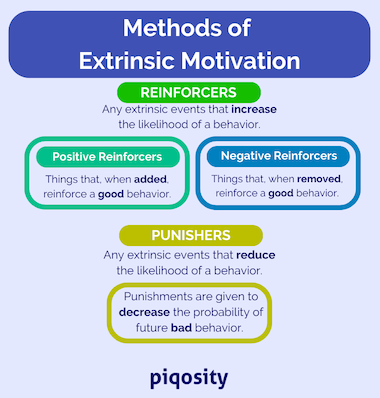
Parents and teachers who are struggling with how to motivate students for standardized tests feel the truth behind the old cliché: “you can lead a horse to water, but you can’t make it drink.” So how can you convince your students that it’s worth their time and energy to prepare fully and strategically for standardized tests? In this article, we will explore different kinds of testing motivation for students and offer advice on the best ways to encourage testing success for the ACT, SAT, ISEE, and beyond.
How to Motivate Students to Do Well on Tests
Although every student is unique (and will thus be best motivated by a unique combination of factors), there are a handful of strategies which form the backbone of all successful student motivation. These strategies are listed below, and explored at length in the following article.
- Foster intrinsic motivation: articulate a vision and philosophy for success.
- Encourage college aspirations: remind students of the link between college, core academics, and standardized testing.
- Promote student buy-in: engage students in dialogue to find a successful motivational approach.
- Incentivize success: use a system of extrinsic rewards (and occasionally, punishments) to keep students on track.
- Focus student attention using goals: work with students to craft a mixture of short- and long-term goals that are measurable and attainable.
Is Student Motivation Worth the Effort? Understanding the Stakes of Standardized Testing
It’s worth saying up front that motivating students requires active involvement, which means devoting time (and sometimes money) to finding the right type and amount of motivation for your student. If you already live a busy life or want to avoid conflict with your test-averse student, you might be asking yourself “Is this worth it? Does it really matter if my student doesn’t get a good SAT score?”

We think the answer is pretty clear: yes, it is worth the effort.
It’s well-documented that a reliable indicator of someone’s future wealth is their education level; American workers with a college education make, on average, nearly 75% more than those with only a high school degree. Even students who start, but don’t finish, an undergraduate degree are better off than those who don’t: According to the Brookings Institute, for every year of college a student is enrolled, they can expect to earn 10% more than their non-enrolled peers.
If you’re a parent who wants your student to have a chance at this kind of future, you’ll need to optimize their chances of getting into college. Stellar SAT or ACT scores are one of the best ways to attract the attention of college admissions. Furthermore, test scores are often mandatory for students to qualify for some academic scholarships.
To put it another way, tests like the SAT and ACT are “high-stakes testing.” As we can see, there’s a lot potentially riding on the outcome, making student motivation well worth the effort.
Struggling to decide whether the SAT or the ACT is a better fit for your student’s strengths? Check out our guide to The Differences Between the ACT and SAT.
Types of Motivation
Before we get into the specifics of how to motivate students for standardized tests, let’s look at the two main types of motivation: intrinsic and extrinsic.
- Intrinsic motivation is a person’s innate desire and propensity to engage in actions that they genuinely enjoy. In other words, doing the activity in question is its own reward.
- Extrinsic motivation, conversely, arises from external incentives and consequences. Instead of engaging in an acti vity because of a natural propensity, extrinsic motivation is based on some set of consequences separate from the activity.
Which Motivation Type Encourages Students?
What does this look like if you’re trying to figure out how to motivate students for standardized tests? When applied to the psychology of student motivation, intrinsic motivation is generally described as a love of learning for the sake of learning. In contrast, a student’s extrinsic motivation stems from the ways external forces like parents or teachers reward or punish them for their performance.
Obviously, intrinsic motivation is the most desirable, but fostering it is generally a lengthy process. Extrinsic motivation can show very quick results, but they can be short-lasting or require escalating incentives to be maintained. So, what is the best way to motivate students? An approach combining both intrinsic and extrinsic motivation.
For Teachers and Tutors: Fostering Intrinsic Motivation
As we’ve established, the best approach to fostering student motivation is a combination of intrinsic and extrinsic motivation. What’s more, a successful approach should come from a collaboration between students and parents (or educators). Together, students and parents can enhance student motivation by working to establish long-term and short-term goals that are challenging, measurable, and attainable. They should also work to set up extrinsic systems of incentives and disincentives for both kinds of goals, for when intrinsic motivation fails.
Fostering Intrinsic Motivation
Parents should foster intrinsic motivation by articulating a vision and philosophy for success. What might this look like? For starters, parents should discuss the positive aspects of education with students on a regular basis (a good starting place might be the compelling statistics we shared above). You will need to engage your student in an open conversation about the benefits of reaching this vision and come to an agreement on the best way to get there. By engaging your student in this process, you are more likely to create buy-in than if you simply dictate a policy to them.
The vision you outline should be a tangible, measurable, and attainable destination, and the philosophy should clearly articulate the ways to reach that vision. For example, you might outline a vision that your student improves in mathematics by increasing their successive quiz grades by five points each time. The philosophy for this example would be that they should spend one hour a day by correcting homework and working through additional, unassigned problems.
Using Extrinsic Motivation
In the event that engaging with your student doesn’t work (or, more likely, that your student is only intrinsically motivated some of the time), you also have the option of establishing extrinsic motivators. The traditional sense of extrinsic motivation focuses on reinforcers and punishments.
- Reinforcers are any extrinsic events that increase the likelihood of behavior. There are two types of reinforcers: positive and negative. Positive reinforcers are things which, when added, increase the likelihood of a desired behavior. (Examples include trophies or gifts, an allowance, verbal approval, allowing an extra hour of gaming, etc.) Negative reinforcers are things which, when removed, increase the likelihood of the desired behavior. (An example might be the removal of an unwanted chore if a student achieves a certain grade.)
- Punishers, in contrast, are stimuli that decrease the probability of future undesired behavior. (Common examples include jail terms, criticism, ridicule, removal of privileges, etc.) It is easy to be confused about the difference between a punisher and a negative reinforcer. Remember that a punisher reduces a behavior, while a reinforcer (whether positive or negative) increases it.

So what might extrinsic motivation look like for your student? To take an example of a punisher, perhaps you have a policy whereby if they fail to achieve a certain score on a practice ACT section, their phone is taken away for an entire week. Or, for an example of a positive reinforcer: perhaps if your student reaches a particular level of ISEE scores, you promise to take them and their friends to a restaurant or event place they enjoy.
Although the first tactic that parents often resort to when their child is misbehaving is some form of punishment, academic research and our years of experience have shown that punishments are less effective in the long run (and can yield unintentional negative side-effects, like even making students anxious about their learning). Therefore, punishments should be used sparingly for motivating your student; it is much better to use reinforcers.
Speaking more specifically about how to motivate students for standardized tests, an effective strategy could be using a mix of positive and negative reinforcers as the student studies for the exam, with a particular focus during periods of time when the student’s self-motivation falters. This provides a support system to help them keep up their endurance when working towards their goal score.
An Important Note on the Benefits and Drawbacks of Rewards
When a student independently does well in school or does well in an activity, parents often feel compelled to reward them in some way in the hope that this behavior will continue and strengthen into some kind of “super motivation.” However, in these cases, it is usually best to leave the child to their own devices. Studies show that when a student is intrinsically motivated, adding extrinsic motivation only serves to undermine and therefore lessen the intrinsic motivation.
There is an exception to this finding, however. If rewards are unexpected or if they are intangible, then they generally do not undermine intrinsic motivation. Intangible rewards refer to rewards that are verbal in nature, like praising a job well done. This can be a bit unsettling for many in western cultures as our society depends heavily on expected and tangible rewards. It’s also important to note that if an unexpected reward is offered too frequently, it will become an expected one.
Get Help with Motivation by Leveraging Test Prep Technology
If you still feel like you’re struggling with how to get yourself or your student motivated for standardized tests, you might want to consider using some outside resources. As you begin or continue your test prep journey, Piqosity is here to help!
Piqosity’s uniquely structured user interface can help you strategically manage your study time for maximum improvement. If you feel like you’re hitting your head against the wall wondering something like “Why is my ACT score not improving?” then Piqosity’s tried and true test-taking strategies (like our ACT tips and tricks) are for you!
Along with our full-length, online ELA and Math courses for grades 5-11, we offer full SAT, ACT, and ISEE test prep courses, each of which includes 12 practice exams, dozens of concept lessons, personalized practice software, and more. Our upcoming digital SAT course includes two digital PSATs, aligned to the newly updated SAT formatting to help you prep ahead of time.
The best part? You can try out all of Piqosity’s features with our free community account. When you’re ready to upgrade, Piqosity’s year-long accounts start at only $89.


